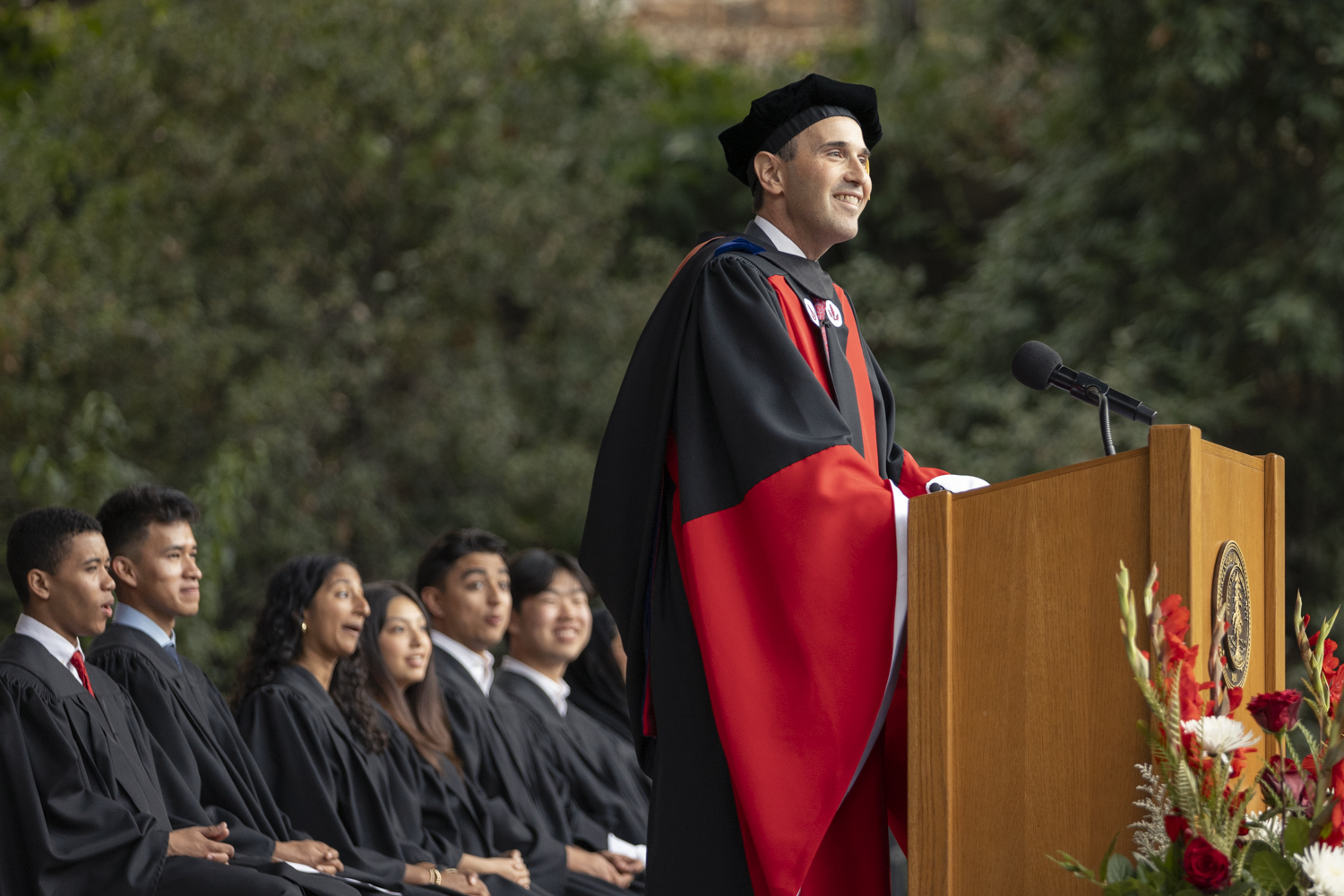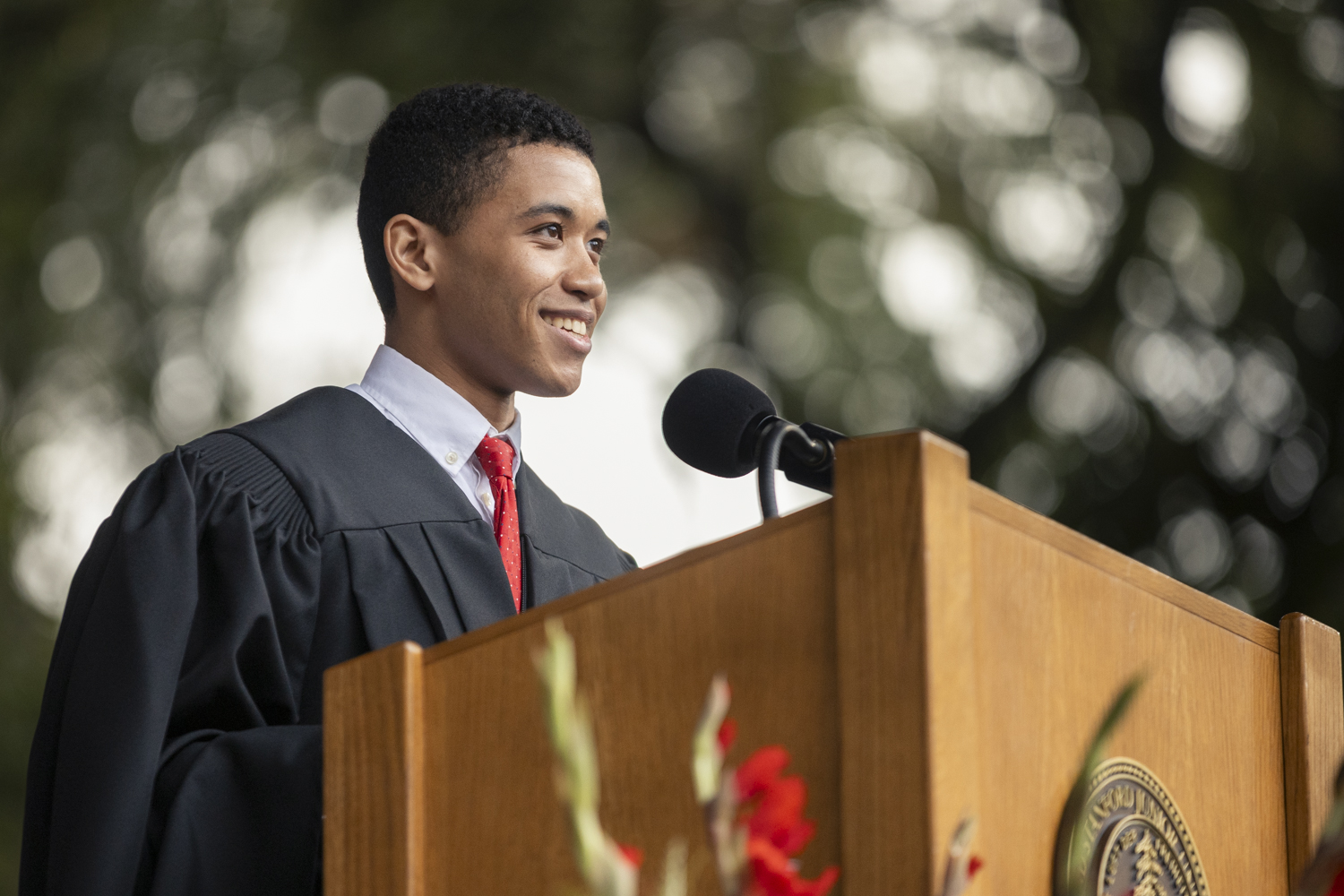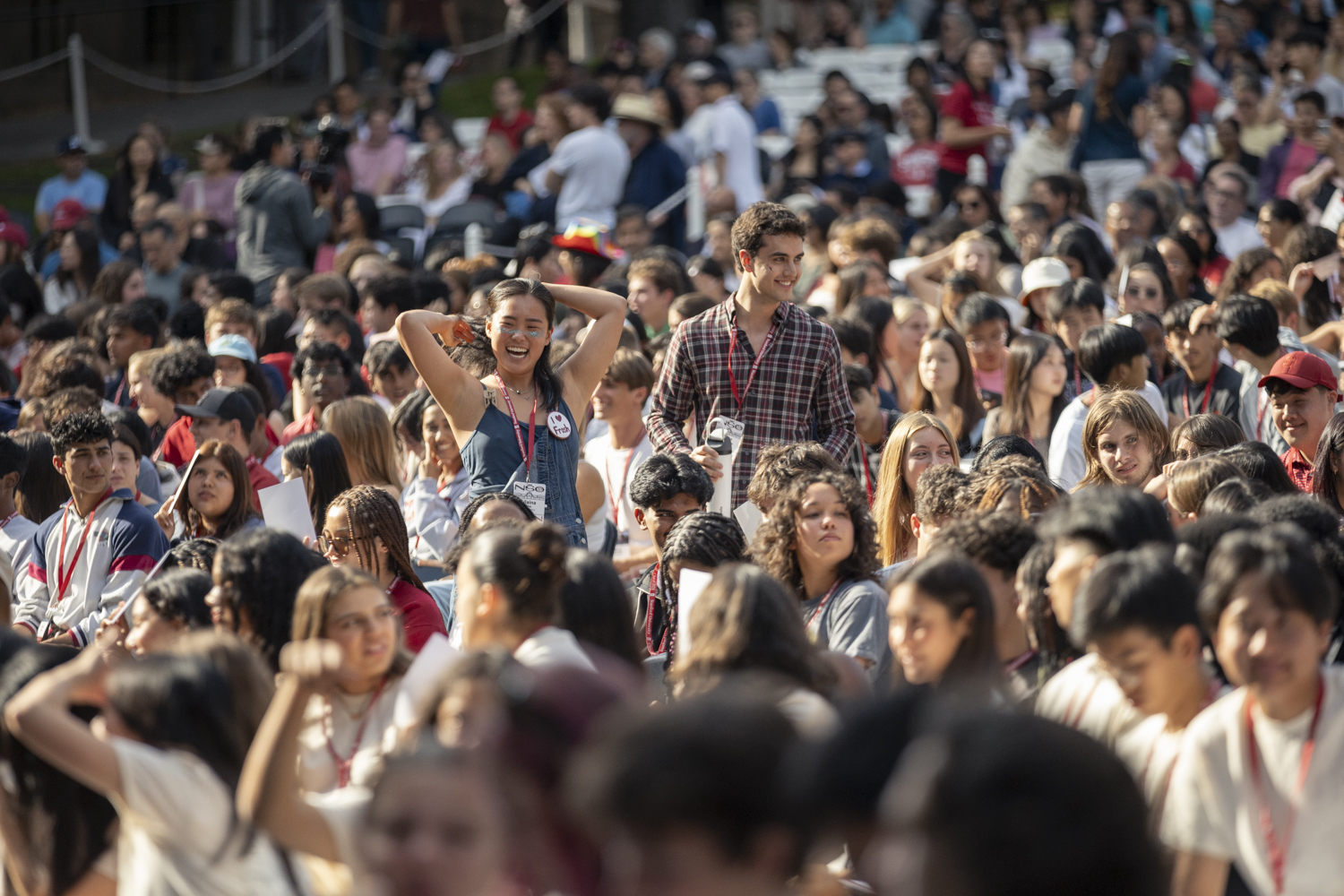In his first Convocation address as Stanford University president on Tuesday evening, Jonathan Levin reflected on his own first days at Stanford and encouraged students to embrace uncertainties, grapple with big questions, and be grateful for the opportunities and community around them.
“Like you, I am beginning a new chapter,” Levin said.
“I’m energized by the opportunities before us, and by our future – the future that you represent,” he added. “I couldn’t be more excited to welcome you as my first class.”
Stanford’s annual Convocation formally inaugurates the new academic year and welcomes new undergraduates to the campus community. This year, 1,704 first-year and 60 transfer students are enrolling at Stanford from across the country and the world. Tuesday’s ceremony took place at Frost Amphitheater where new students gathered with their families and friends.
Convocation is one of the signature events of New Student Orientation (NSO), which began Tuesday morning with new students moving into their Stanford residences, many of them greeted by President Levin as they arrived with boxes and suitcases. In the evening, parents met and mingled at an informal dinner that included Provost Jenny Martinez. A complete schedule is available online.

President Jonathan D. Levin addresses new students at Convocation. | Andrew Brodhead
Presidential pointers
In his address, President Levin stressed that asking questions is central to the college experience. He encouraged students to engage in Socratic dialogue, following the example of the Greek philosopher Socrates, who used probing questions to challenge others with strong convictions.
“Unlike the people around him, he was comfortable not knowing,” Levin said. “He was comfortable asking questions and not having answers.”
Levin emphasized that college is fundamentally about questioning and learning to appreciate the limits of one’s knowledge. He noted, “There are always new ways to approach a topic, or to reframe your thinking, or to explore more deeply.”
He encouraged students to explore big questions, such as “How do I prepare to live a good life?” or “What does it mean to be a citizen in society or in a democracy?” – topics they will explore this year in the COLLEGE curriculum.

Incoming students chat at Frost Amphitheater. | Andrew Brodhead
Levin also expressed hope that students will use their time at Stanford to learn new subjects and skills, find their career paths, make lifelong friends, and fall in love with the campus. “And most of all, that you leave with many questions and a greater comfort in not knowing all the answers,” he said.
President Levin urged students to approach their Stanford journey with curiosity – and without judgment. “One of our collective challenges is to create an environment where each of us, with so many different passions and views, can thrive,” he said, emphasizing the need for generosity and openness.
He advised students to find a balance in their approach to Stanford. He said that during his many years on the Farm, he’s observed that the most successful students set goals and make plans, but also remain open to serendipity. “They put themselves out there to try new things and to take a risk in meeting new people,” he added.
Lastly, Levin reminded students to be grateful for the rare opportunity ahead. “We should all try, through humility and service, to be deserving of these circumstances.”

Diego Kagurabadza, ’25, gave the student address. | Andrew Brodhead
Stretching at Stanford
In his student address, senior Diego Kagurabadza characterized his Stanford experience as stretching, or “pulling yourself in new directions; testing your limits; learning what feels right, and perhaps more importantly, learning what doesn’t.”
Kagurabadza, who is pursuing a double major in political science and American studies, shared how he has been stretched in many ways at Stanford. For example, after a friend goaded him into taking a yoga class, he finally acquiesced. It was awkward at first, but the experience led to deep friendships. He also took Introduction to Psychology despite his lack of experience, finding it directly relevant to his majors.
“I was tempted to drop the class and run, but I decided that the stretch was worth it,” he recalled.
He said he refused to let imposter syndrome dictate his college experience and urged new students to “stretch” themselves beyond their comfort zones while at Stanford.
“Stretching can look awkward, can be uncomfortable, and it may even tire you out,” he said. “But so, too, does college! Embrace it. It’s worth it every time. Just remember not to stretch yourself too thin. But don’t worry, our community is here to help you along the way.”

New students enter Frost Amphitheater for Stanford’s Convocation ceremony. | Andrew Brodhead
Class profile
The first-year students in the Class of 2028 arrive at Stanford from all 50 states and 70 countries. Fourteen percent are international students. The new students speak 76 unique languages other than English.
Sixty-six percent of the domestic first-year class attended public schools and the remainder attended private, parochial, and home schools. The 60 transfer students come from 51 colleges and universities, including 30 community colleges. Twenty-one percent of the new students are the first in their families to attend a four-year university.
Convocation also included remarks from the Rev. Dr. Tiffany Steinwert, dean for religious and spiritual life; R. Lanier Anderson, interim vice provost for undergraduate education; Richard H. Shaw, dean of undergraduate admission and financial aid; a land acknowledgment delivered by Micah Tsosie, ’25; and performances by the Stanford Jazz Workshop brass quintet and students Minseung Choi, ’25, and Katrina Franco, ’27.